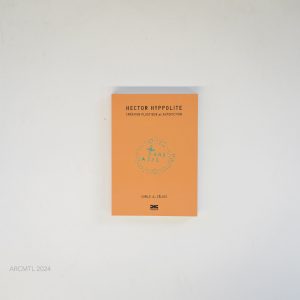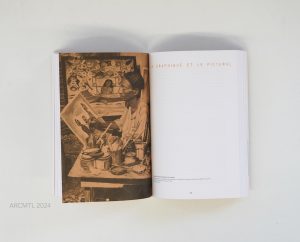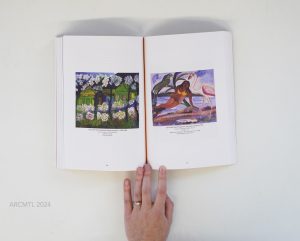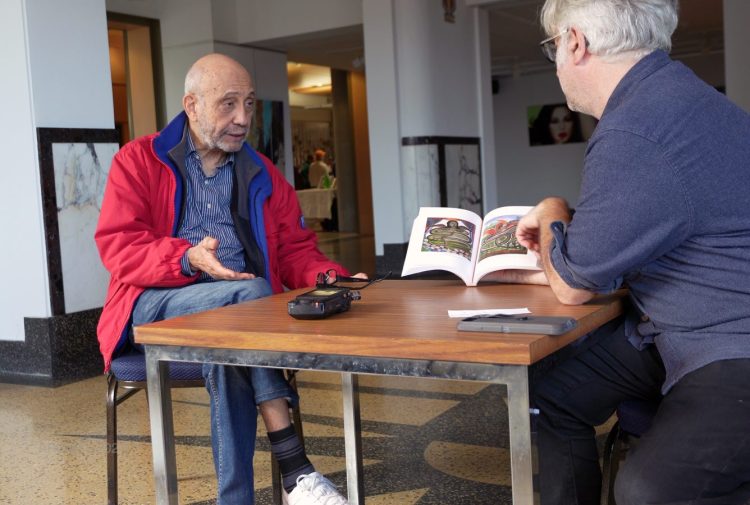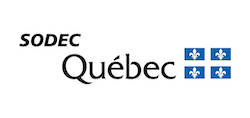Volume 7 MTL: Hector Hyppolite Discussion with Frantz Voltaire
Frantz Voltaire is currently president of the International Centre for Haitian, Caribbean, and Afro-Canadian Documentation and Information (“Centre international de documentation et d’information haïtienne, caribéenne et afro-canadienne” (CIDIHCA)), which he founded in 1983. Throughout his career, he has made documentaries and published books and articles on Haitian and Afro-Canadian history. He is currently director of the Revue académique d’histoire haïtienne.
The following is an edited transcript (translated from the original French) of a discussion between Franz Voltaire and Montreal historian Louis Rastelli on a book by Carlo A. Célius, Hector Hyppolite: Création plastique et autofiction, published by CIDIHCA France in 2023. The book is the first comprehensive monograph to be published on the work of Haitian painter Hector Hyppolite.
Louis Rastelli: I’m going to start by introducing Frantz Voltaire, co-founder of the CIDIHCA in Montreal. And practically from the very beginning, there was a publishing aspect?
Frantz Voltaire: Actually, publishing only started in ‘86 because before that there was a Haitian publishing house, Nouvelle Optique. We developed the publishing section in ‘98. In ‘99, we launched CIDIHCA Productions with a first documentary on Port-au-Prince.
One of the centre’s missions was to preserve Haiti’s literary and artistic heritage. We’ve built up a huge library of over 30,000 works. 40 years later, we’ve set up archives on Montreal’s Haitian community, trying to recover posters, anything that falls under ‘grey literature:’ leaflets, documents that were not recorded, as well as magazines.
It’s also a centre that works in partnership — we work in partnership with [ARCMTL] — but also with the Maison d’Haïti and other centres, trying to get them to keep their archives, so that we can perhaps have a more complete cultural history of Montreal.
We’ve also developed artistic publications, because we have a small gallery space. We exhibit not just Haitian artists, but also Caribbean artists, Latino artists, and sometimes photographers. So that sums up the centre and its role in the community, not just the Haitian community, but the Montreal community as a whole.
Louis Rastelli: You’re also in the best position to rectify the forgotten parts of history. It’s already established that Hector Hyppolite has long been considered one of the great Haitian painters, but am I wrong or is this not the first authoritative book, the most complete anthology of his work?
Frantz Voltaire: Absolutely, because there have been some in English; I would say ‘coffee-table books.’ And there have been displays of a couple of Hyppolite’s works in France and elsewhere. At Boubou, one of Hyppolite’s works is on show in the Surrealist exhibit.
Louis Rastelli: Right, because he was discovered by André Breton?
Frantz Voltaire: André Breton visited Haiti in 1944 with Wifredo Lam. He discovered Hector Hyppolite, who was a voodoo priest, who had a couple of works and who became more recognized with the creation of the Art Centre. When the Art Centre was founded in Haiti [that same year], it brought painters with formal training together with painters who were more naïve. And the Art Centre is today perhaps one of the most important centre that still exists in Haiti.
Louis Rastelli: I know it was a challenge to do the book on Hector Hyppolite, you certainly started with archives and images and things you already had, but you also managed to find and photograph a lot yourselves. If I’m not mistaken, there are about a hundred and thirty plates?
Frantz Voltaire: Yes, it was very expensive, but at the same time, we were wondering how we could do a complete monograph on Hector Hyppolite without presenting his works in colour.
We also had to buy photographs from the Pierre Verger Foundation in Bahia. He was a great photographer who even documented Hyppolite’s death. The museum gave us the rights. The most difficult part was finding the private collectors. Where there were no photographs of the works, they had to be photographed by professional photographers so that the book could be illustrated. Because this is the kind of book that is made to last 50 years or 40 years.
Louis Rastelli: I find it curious that André Breton would have seen something Surrealist in Hyppolite’s work. I have the impression it’s a lot more Symbolist.
Frantz Voltaire: Yes, but at the same time, you have to understand that Hector Hyppolite had no training in painting. He was an amateur painter; he painted in his temple. So the art centre gave him the opportunity to have a body of work. And it didn’t last long, since he died in ‘48.
And acquisitions were certainly made in Haiti, but mostly by American museums.
Louis Rastelli: And I understand that, at the time, he sold a lot of them to American soldiers, but he [painted] with chicken feathers, on cardboard. Until the Art Centre —
Frantz Voltaire: Yes, the centre came along and provided them with the material and allowed this meeting between painters who had a more classical training and the so-called naive painters. But they’re not as naive as you might think,
Louis Rastelli: No, these paintings are very rich in content, very expressive, very colourful too. If there’s a lack of technical refinement, for me it doesn’t matter because it won’t change any of his paintings in terms of their meaning.
Frantz Voltaire: Absolutely. I’ll come back to Malraux’s visit, for example. André Malraux comes to Haiti. He is writing L’intemporel, which is due to be published by Gallimard. At Gallimard, he says “Stop publication. I want a chapter because I’ve just discovered a people of painters.”
In fact, he discovered a movement in Haiti. This was in the 70s. It’s a movement called the Saint-Soleil, which was the name of a work by a painter I would call Modern Haitian, Garoute, known as “Tiga,” who himself had encountered peasant painters. This is a country where painting has become a way of expressing life.
Louis Rastelli: After his death, was Hector Hyppolite quickly recognised as an important figure? Or was it because of Breton’s references?
Frantz Voltaire: Malraux’s visit, but also André Breton’s visit, and especially since André Breton was putting on an exhibition with Wifredo Lam, the great Cuban surrealist. So his works are known, but I’d say it’s only recently, via museum collections, that we’re discovering the importance of Hector Hyppolite. And from there, the work of Carlo Célius.
Carlo Célius did his doctorate at Laval University. And he works as a researcher at the CNRS. And the interesting thing about Carlo is that he’s not just an art critic, an art analyst, but he’s also a painter. So it’s interesting because he gives a double perspective, that of the critic, but also that of the artist.
In fact, [this book] is the first systematic monograph on Hyppolite. It’s really a work that resembles a catalogue raisonné.
Louis Rastelli: Is there any interest from an English-language publisher?
Frantz Voltaire: Absolutely, absolutely. We’re currently talking to an English translator. Not just a translator, but an English publisher.
Louis Rastelli: I’d love to see it as an exhibition. I think that would really generate a new wave of interest.
Frantz Voltaire: Yes, people are starting to discover these works now. For example, last year I discovered a small museum in Waterloo, which is maybe 2.5 hours from Des Moines, with 3,000 works of Haitian art. And now they have a project to document and archive these works that were in a museum along with some really extraordinary paintings.
They even have some Hyppolites too. But in a small museum attached to a university, where they have hired a team to work on catalogues raisonnés of works in American museums.
Louis Rastelli: That’s very good, and is the book already available in bookstores?
Frantz Voltaire: Yes, it’s already available at the CIDIHCA, but it’s also available in France and will soon be in bookshops in Montreal.
Louis Rastelli: I’d like to congratulate you on the work I know you’ve put into all this.
Frantz Voltaire: Well we’ve made a work that should last. We insisted, it’s a work of several… almost a decade of research.
Louis Rastelli: But well done. It was due and I’m very happy to be able to present it to our audience and to fans of the artist’s book. Thank you Frantz.
Frantz Voltaire: Thank you.

